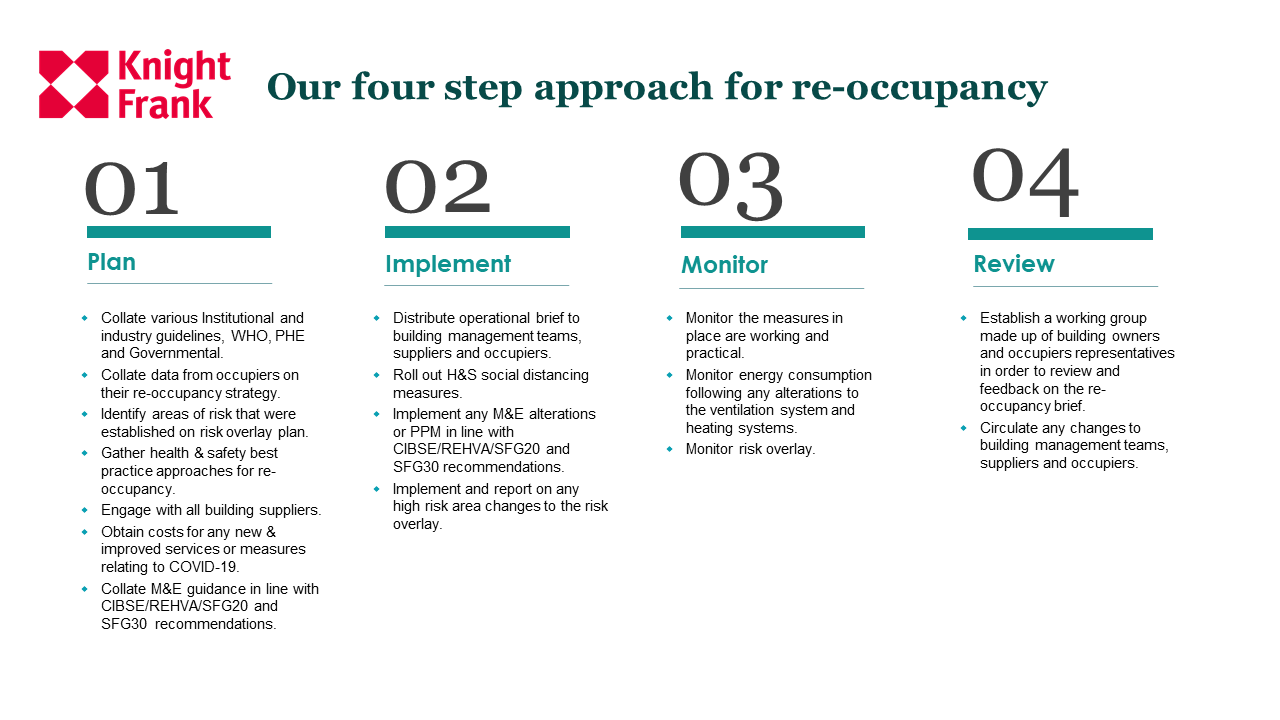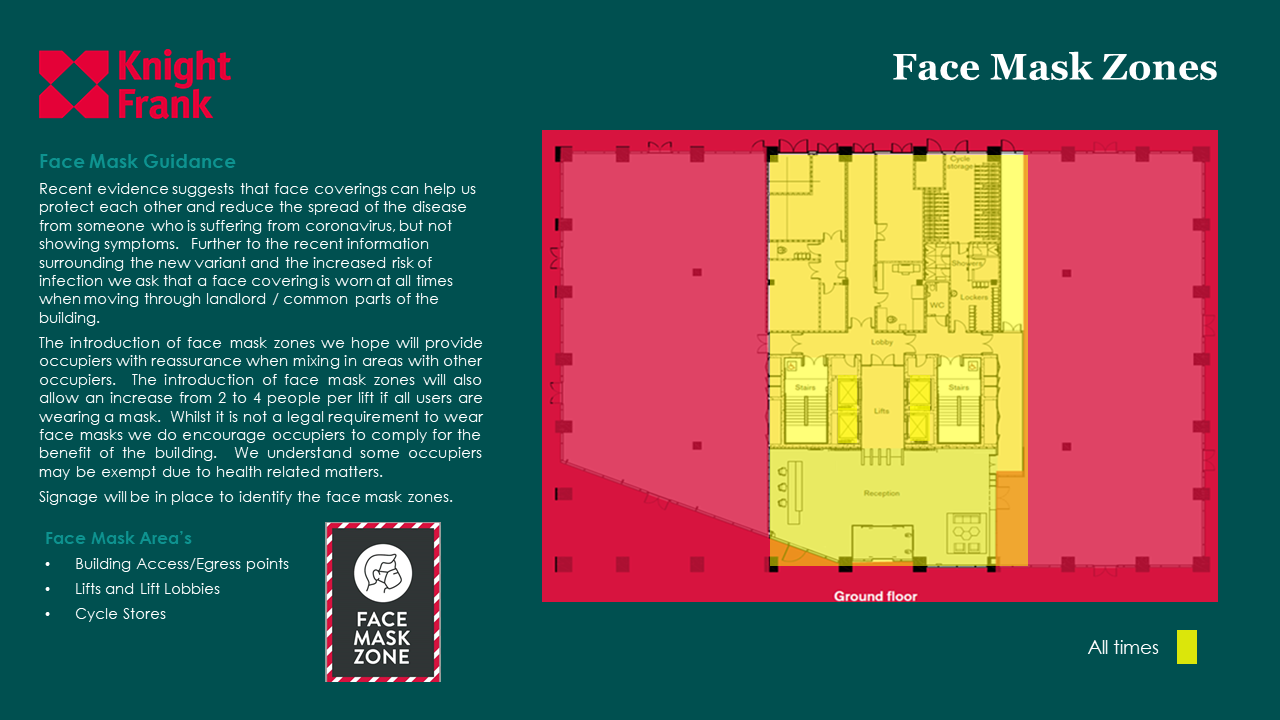How to create a safe and healthy workplace
Our (Y)OUR SPACE research identified Safe as one of the four S’s set to shape our future workplaces, with an obvious and elevated business consideration being the delivery of safe and secure working environments. The Covid-19 experience has heightened our awareness of the role that workplace and building design can have in mitigating disease transmission, thus keeping employees safe and well. But how can businesses create safe and healthy workplaces?
5 minutes to read

How can our working environments support the Diversity & Inclusion business agenda?
View video.
The rapidly changing situation of the past 18 months has meant facilities management teams are working tirelessly to ensure workplaces are compliant. Meanwhile, across the globe, hastily introduced rules and regulations have been designed to mitigate the risks of employees getting and spreading Covid-19 infections at work.
However, the lasting legacy of the pandemic, specifically in terms of workplace safety, is already proving to be a lot more permanent than the decals applied to floors and desks to indicate social distancing (which are now, in England at least, being tentatively removed following the relaxing of restrictions on July 19th).
In the long-term, the definition of what we mean by a ‘safe and healthy workplace’ has been broadened to include diversity, equality and inclusivity, as well as mental health and wellbeing. What became suddenly visible during the pandemic was the huge range of individuals’ circumstances and lives outside work, creating a stark contrast with the often monocultural and ‘one size fits all’ format of the office. This is borne out by the data; recent research has shown that women and ethnic minority groups are more likely to feel stress and anxiety about returning to the workplace after months of working remotely.
So, how can we better design the workplaces of the future to be more inclusive? Firstly, we need clearer structures defining when and why employees are expected to be present in the office, entrusting employees to manage their own time and workload around that, and training and supporting people to develop their virtual and digital skills (so as to not create a ‘two tier’ workforce).
If they want to attract and retain a diverse workforce, then companies should not shy away from the complex web created by individuals’ (and teams’) interconnected workplace needs, but instead, seek to ‘flex’ every tool at their disposal – whether that be a previously underused and unloved regional office, IT platforms which have never really been utilised to their full potential, or a network of digital natives raring to lead the way in trialling new ways of working. Driving the workplace design should be the principles of connection and community – creating spaces that better reflect the communities both within them and which they are a part of.
That is not to say that we are out of the woods yet in the shorter term. There is still a huge amount of ongoing work in keeping physical environments as clean, well-ventilated, and as responsibly occupied (i.e. not too densely populated) as possible. As the UK Government passes the baton of responsibility to businesses, lifting legal curbs even as infection rates soar, commercial objectives are going to have to be balanced against employee health and wellbeing.
As we are seeing, there is a real and direct threat to operations in some industries if large numbers are isolating or do not feel that the workplace is safe enough to come into. What we may not yet have a measure of is the longer-lasting effect of getting that balance wrong – if, as the early data is suggesting, labour shortages are giving employees the upper hand, if they perceive that their employers are exposing them to too much risk in the workplace, they will simply vote with their feet.
On a more granular and practical level, how can businesses adapt? And what needs to be done to create a safe and healthy work environment? Using our experience as a case study, the below might help businesses begin their efforts.
Planning, monitoring and preparing for re-occupancy: a case study
Over the last year and a half, we have had to make many adaptations to our workplaces to allow them to be safe for our employees, visitors, and contractors.
We wanted to be one step ahead and ensure that our facilities managers and building managers had the right tools for the right property.
Whether this was an office block or a retail park, our facilities managers and building managers were armed with site assessments, a Covid-secure checklist and our re-occupancy guide.

Download
Our site assessment template allowed for an adequate risk assessment and allowed us to plan, monitor and prepare for re-occupancy.
This assessment led to a Covid-secure checklist, which was uploaded to our compliance system. The system was then monitored to ensure that all our properties were compliant with Government guidelines.
Some of the measures included:
- The installation of hand gel stations throughout common areas
- The installation of PPE bins for face coverings
- Enhanced cleaning on high touch points and include the use of Zoono, which is highly effective in protecting surfaces against Covid-19
- Installation of screens to protect reception staff
- Increased ventilation via natural or mechanical means
Meanwhile, to provide mental clarity and comfort to those returning to the office – bearing in mind the significant stress and anxiety the past 18 months have induced – we created re-occupancy guidance for tenants. This allowed those occupying buildings to share information with their employees, which would give them the reassurance of the measures they could expect once they returned to the office.
The re-occupancy guidance for tenants included:
- Social distancing information
- One-way systems
- Face mask zones
- Lift capacity
Signage was also implemented across properties to make those aware of one-way systems, while social distancing markers allowed tenants, visitors and contractors to move around the property safely.
As we move into the next phase of Covid-19, amid a somewhat return to normality, we will continue to revise our guidance to ensure all of our facilities and building managers have the tools they need to make the necessary decisions based on the latest Government advice.

Download

Download

To what extent can our working environments support our physical, mental and spiritual well-being?
View video.

What workplace interventions will we see over the long term to support health, safety and well-being?
View video.